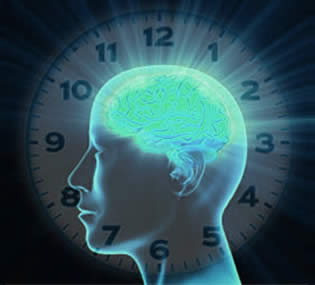Most of us regularly spend about one-third of the 24-hour day asleep and the remaining two-thirds awake. This kind of pattern one that repeats itself every 24 hours or so is a circadian rhythm.Our natural inclination as human beings is to sleep during the night and to be awake during the day, and this is due to the effect of our circadian rhythm.
The activities of the organs are divided as follows:
1h – 3h – Liver
3h – 5h – Lung
5h – 7h – Large Intestine
7 a.m. – 9 p.m. – Stomach
9am – 11am – Spleen / Pancreas
11h – 13h – Heart
1pm – 3pm – Small Intestine
3pm – 5pm – Bladder
5:00 p.m. to 7 p.m. – Kidneys
7:00 p.m. – 9:00 p.m. – Pericardium
21h – 23h – Triple Heater
23h – 1h – Gallbladder
Circadian Rhythm Disorder
If you sleep or wake up a few hours before, it’s usually not a problem. But it becomes a problem when you find yourself unable to wake up or you can not stay awake during work or social commitments. This is when the timing of your sleep becomes a problem, and it can be diagnosed as a circadian rhythm sleep disorder.
The circadian rhythm sleep disorders are of two types:
- The advanced sleep phase syndrome – Fall asleep and wake up very early.
- The delayed sleep phase syndrome – Falling asleep and waking up too late.
The cure for circadian rhythm sleep disorders is to change the withdrawal of your sleep either forward or backward. To do this, you must organize your zeitgebers either early in the day if you want to sleep earlier or later in the day if you want to sleep later.
By changing the exposure of light, meals and activities, the clock is calibrated (dragging) by shifting the processes associated with the circadian rhythm to earlier or later in the day.
What Is Circadian Rhythms;Where It Comes From
The term circadian, derived from two Latin words, means “about a day.Our bodies have many circadian rhythms: body temperature, blood pressure, heart rate, blood-sugar level, and hormone secretion all peak and dip once in each 24-hour period. Blood sugar begins CO drop slowly in the late afternoon.
It reaches a low point between 3 A.M. and 6 A.M. and then begins to rise again. Blood pressure is generally highest at about 6 P.M. Pulse and respiration rates also have daily rhythms, though they vary for different people. We are not usually aware of our circadian rhythms, but we may notice some of their effects. When you next stay up all night, you may notice that you feel cold about 4 A.M. despite a constant room temperature. That’s because body temperature drops to its low-est point a few hours before dawn.
Despite basic shared patterns, individual biological clocks differ. “Morning people” awake refreshed and alert and are most productive in the early part of the day. “Night people” on conventional schedules drag themselves our of bed, stay half-asleep for an hour or two after rising, and prefer to work in the evening. Being a night or a morning person may be related to rhythmic changes in the levels of certain hormones.
Several investigators have found that most people can readily and accurately identify themselves as morning or night people. Barbara Watts found that college roommates who are “mismatched”—that is, a morning person with a night person—have more trouble getting along than “matched” roommates. Such mismatching can also affect marriages.
Mismatched spouses may have to rely on creative compromise to overcome the lack of synchrony in their personal rhythms . If you’ve ever traveled across several time zones, you know what it is like to be biologically out of synch with your surroundings. The discomfort, or jet lag, that travelers experience results from the desynchronization of biological rhythms. For example, a traveler arriving in London at 9 A.M. from New York may be prepared intellectually to begin the day.
But for her body it is only 4 A.M. and not yet time to get up. You can imagine what happens to an executive engaged in delicate negotiations in London when her body is still on New York time. While her counter-parts arc refreshed and ready for the day’s business, her body is protesting, “Help! I should be sleeping!” Many governments and corporations now require their representatives to leave early for trips overseas to give early tor trips overseas to give their bodies time to adjust.
Scientists have also found that jet lag can be eased by limiting one’s intake of caffeine and alcohol and concentrating on high-protein and high-carbohydrate foods before changing time zones. Similar problems arise when workers switch from the day shift to the night shift.Many of the 10 million Americans who work the night shift report problems of adjustment, including insomnia and fatigue. It may be pertinent that the nuclear accident at Three Mile Island in 1979 occurred at 4 A.M.—the low point in the daily cycle of alertness on the shift of a crew that had just been rotated onto the night schedule.
According to some recently published studies, there are other factors that imply the functioning of the circadian rhythm. They are related to the Moon cycle, tides, Earth’s climatic dynamics by sea and wind currents . Thus, the circadian rhythm is not confined to the question of physiology, becoming an open field in which astronomical, ecological and geological factors present effective influence.

